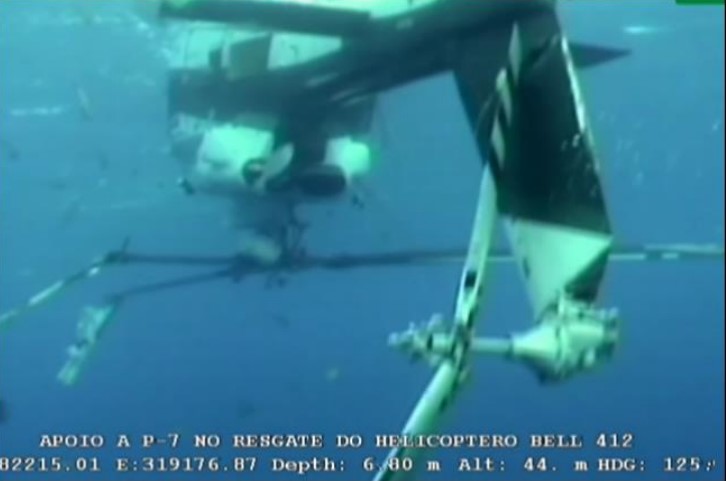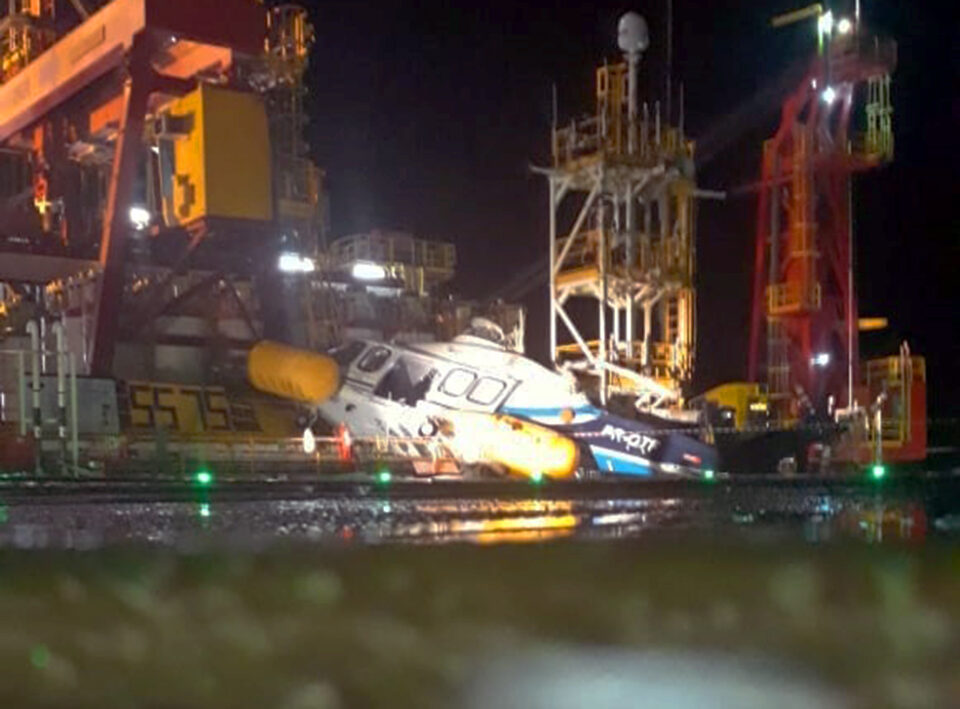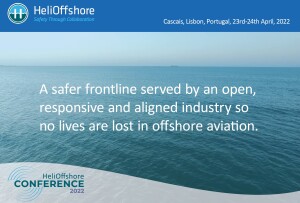Review of: “The impact of human factors on pilots’ safety behavior in offshore aviation companies: A Brazilian case” (Dario Sant’Anna and Adriana Hilal of COPPEAD Graduate School of Business, Federal University of Rio de Janeiro in Safety Science 140 (2021))
Safety Science is the premier peer-reviewed safety journal. In August 2021 they published a paper on safety in the Brazilian offshore helicopter industry. In this article we summarise the context, methodology and key findings and then discuss the implications.
Context
Brazil’s offshore oil and gas exploration has driven one of the bigger offshore helicopter operation sectors. The main customer of these helicopters is state oil company Petrobras (described as the ‘Main Contractor’ in the paper). This IOGP member company has a dominant market position, contracting 80-90% of all offshore helicopter operations in Brazil. The authors say that there are three big helicopter operators “accounting for more than 85% of the entire sector” and a couple of smaller operators. Pilots typically work a roster with 15 consecutive days on duty for 12 hours per day and almost 8 hours flying each day according to the authors.
Exploration of the deepwater ‘pre-salt region‘ had created a lot of oil and gas industry excitement and the potential was so huge that Brazil has started to open the sector to foreign investors operating offshore fields. It was predicted Brazil was heading for a fleet of 200 offshore helicopters in 2020, with particular growth in heavy helicopters for the long-range deepwater fields.
The collapse in the oil price in Q3 2014 however had a catastrophic affect on the offshore helicopter sector in Brazil. The fleet declined from 100 helicopters to 70 in 2016, with a number of contracts terminated in 2015. One helicopter operator is reported to have made almost one third of their pilots redundant. New contracts also tended to be shorter two years rather than five. In 2020 Petrobras is reported to used a reverse auction process to drive down prices.
The authors also note that from 2014 onwards the company had been the centre of a major corruption inquiry (‘Operation Car Wash‘), which affected its own capital expenditure and may have further discouraged foreign investment in the oil and gas sector. Privatisation of Petrobas is now being considered.
The last fatal offshore accident in Brazil occurred on 16 March 2022.
Research Question and Methodology
The authors state that the questions their paper was to address were:
What are the main human factors that affect pilots’ safety behavior in offshore operations?
How can offshore aviation companies manage to mitigate the adverse impacts of those human factors on their pilots’ safety behavior?
The research was qualitative and based on transcribing structured one-to-one interviews of offshore pilots typically lasting 1.75 hours. This approach does ensure feedback is gathered from frontline personnel but such qualitative data will be of perception, opinions and more anecdotal facts. Some refer to such studies as being focused on ‘Thick Data‘ rather than ‘Big Data‘ from a more quantitative study. Both types of studies of course have their place.
The authors explain that…
Interviewees were encouraged to support their statements with examples, and the interviewer asked follow-up questions.
The two authors then independently coded the interview feedback and collated their results into themes.
Then, in a deductive way, evidence was gathered so as to support the themes and interpretations. Finally, the findings were compared to what was available in the literature, aiming to convey the essence of the results adequately.
The lead author is a former offshore helicopter pilot and initially reached out to potential participants. The pool of participants were expanded by the process of ‘snowball sampling‘ as participants were asked to nominate further candidates. This proceeded until ‘data saturation‘ occurred i.e. when unique interview feedback ceased.
Interviews were conducted between April and June 2019 in Rio de Janeiro, Cabo Frio and Macae. At the point of saturation 16 offshore pilots from across the three main companies had been interviewed. Seven were aircraft commanders and nine co-pilots. They ranged from c30 years old to c65 years old (ages are banded in the paper as the pilots had been promised anonymity). Flight time offshore ranged from c500 hours to c15,000 hours.
Some interviewees have also occupied management positions, such as chief pilot, chief of operations, and chief of base of operations.
The objective here was to have a diverse group of interviewees that would somewhat represent the offshore pilot population and bring meaningful insights to the study.
The eights themes the authors ultimately selected to group and present their research findings were:
- organizational culture and communication,
- standardization and subjectivity
- motivation and sense of belonging
- stress and fear of unemployment
- fatigue
- human error
- training and safety management system (SMS)
- perceived loss of prestige
Our observation is that some of the findings within certain themes were especially striking and suggest that the local implementation of some safety initiatives may have had unintended consequences and there are significant organisation factors. We expand on those aspects below using four of our own themes to group some of the author’s findings.
Commercial Pressures, Fatigue and Stress
According to participants, due to market pressures:
…offshore aviation companies have prioritized the financial aspect of their operations…which has drastically increased the pressure on pilots.
An example given was alleged pressure not to record small defects in the technical log to avoid rendering an aircraft unavailable.
There was a time that Petrobras, the main customer…
…was very disorganized and did not optimize air transportation. For example, I have already had to take off only to take 28 kg of meat to an oil rig…
However, since the sector’s economic downturn, both Petrobras and the helicopter operators have
…started to “over-optimize” their resources, especially human resources. Companies have reduced their workforce to the minimal necessary to carry out their current contracts. The main side effect…is the increase in fatigue levels among pilots. The workload has reached a level that compromises pilots’ periods of rest and, consequently, their flight performance.
Pilots are also frequently requested to max out their daily flight-hour limits because no other crew can fly. The lack of operational slack (rested teams to replace fatigued ones) leads to alarming fatigue levels whenever offshore aviation companies request pilots to work beyond their flight hour limits
Pilots commented on the additional fatigue inducing factors of heat, noise, and vibration, and the difficultly of changed sleep patterns when on duty:
Some pilots mentioned that, when they feel tired, they experience episodes of lack of attention, such as skipping checklist items, or short term memory lapses. Fatigued pilots
become quieter and more impatient, which reduces their ability to deal with tricky problems during the flight.
One participant commented:
With the organizational culture of maximum use of pilots, flight schedules have become very exhausting. We wake up very early during the work fortnight. Moreover, flights are very repetitive, with very short intervals between them. Sometimes, I don’t even have time to go to the bathroom.
A further participants said:
In some stressful fortnights, I also have memory lapses. I cannot even remember what happened during the entire day of flight due to stress.
Another participant raised another customer induced stressor:
By the end of each contract, when the company usually fires some pilots, we become less talkative and outspoken in the cockpit. We can’t stop thinking about the possibility of dismissal.
This echoes the observations from the UK CHIRP Charitable Trust, who run the UK’s Confidential Human Factors Incident Reporting Programme (CHIRP), that we discussed here: CHIRP Critical of an Oil Company’s Commercial Practices.

Lider Bell 412 PT-HUW Submerged Prior to Salvage Attempt after Accident 27 March 2013 (Credit: via CENIPA)
‘Schizophrenic’ Flight Training
We believe quantity of training is less important than quality of training; though this is often ignored in the oil and gas aviation circles. In this study, while there was positive feedback on increased use of simulators, the training is “not customized to operational needs”. One participant observed that:
Training in flight simulators is a little bit schizophrenic – withdrawn from the company’s reality. The same maneuvers and emergencies are always trained, whereas the specificities and particular needs of each company are not fully taken into account.
Participants also contended that Crew Resource Management (CRM) training was not optimised around the operator’s risk factors. They also complained about more training being delivered by distance learning, sometimes scheduled for completion while they were on leave. There was a strong preference for face-to-face training and discussion of flight experiences (and also face-to-face briefings by management too).
Excessive Standardisation and Abusive Flight Data Monitoring: Double-edge Swords
There was a recognition that standardisation is important but Petrobras’ “monopoly has generated questionable operational requirements” perceived to be influenced by fixed-wing airline philosophies that have not been adapted to offshore helicopter operations.
Although the standardization of procedures was beneficial initially, it has reached excessive levels, leading to pilots’ demotivation and alienation.
[Petrobras] has created so many rules and procedures that any mistake can cause the pilot to be withdrawn from the [Petrobras] list of reliable crew members. If a pilot is out of this list for any reason, since he cannot fly for his employer’s major client anymore, he will probably lose their job. Therefore, pilots feel that their decisions are in check all the time. They fly worried about the consequences of every single detail of the flight.
Furthermore, one participant dismissively commented that:
The robotization of flight procedures has caused a decrease in the motivation of the pilots…
While helicopter Flight Data Monitoring (FDM) is a proven safety benefit, the implementation in Brazil has had adverse unintended consequences according to the study’s participants, where…
….any change in flight patterns provokes questioning by the operations department. Hence, pilots feel that their flights are being controlled and monitored all the time as if they were in a “big brother reality show.”
A participant observed:
With the fear of unemployment and the use of the Operational FDM, many pilots fly more worried about OFDM than about the flight profile of the aircraft or external dangers. Some pilots “fly” the OFDM. That is, they are more concerned with complying with OFDM parameters than with the safety of their flights.
Consequently the frontline pilots considered both standardisation and FDM, as implemented in Brazil, as “double-edge swords”. The authors comment:
Unfortunately, companies are overestimating the contribution of standardization to offshore aviation safety. Although standardization brings a lot of resilience to the system, it is not the answer to all flight safety problems. It is not a “silver bullet.” It has its limitations, as every operational tool does. That is why a dynamic analysis of safety vulnerabilities is paramount.

CHC/BHS Sikorsky S-92A PR-CHR After Tail Rotor Strike During an Approach 15 April 2017 (Note TR, MR, Tail Boom / TRDS and Sponson Damage and released ADELT) (Credit: unknown)
Safety Management Systems (SMS): Done TO Pilots Not FOR & WITH Pilots
The implementation of SMS is perceived as…
…just another bureaucracy needed to comply with [Petrobras] and the National Civil Aviation Agency (ANAC) requirements, without substantial impacts on precluding aviation mishaps [and] lacks proximity to the day-to-day reality of offshore operations.
The helicopter operators had introduced what the authors refer to as a “fair culture” concept. Its not clear if that is simply the local translation of the term ‘just culture‘ or a specific proprietary manifestation, however it is revealing that this is described being where…
…a board of managers and aviation safety experts analyzes pilots’ mistakes on an individual basis.
If the board concludes that the pilot committed a violation, the company usually fires him.
Some participants considered the fair culture board’s decisions to be arbitrary. This certainly explains a distrust of FDM and why pilots might strive not to trigger FDM alerts, but also this restricts open communication…
All in all, the fear of unemployment and the lack of trust in the “fair culture” are a dangerous combination for aviation safety.
Pilots fear that by reporting an error, they provide derogatory remarks to their own job records instead of contributing to accident prevention.
Not only does the fear of being made redundant make some pilots omit their own mistakes, but they are also more insecure about criticizing systemic errors within the company. When a pilot notices an operational problem, he thinks twice before informing it for fear of contributing to somebody else’s dismissal.
A misguided emphasis, or at very least the perception of a misguided emphasis on the culpability of individuals is undermining the effectiveness of the operators’ SMS in achieving its real aim of improving systemic safety issues.
Our Observations
While participants in this study commented operations are “much safer now than it was two decades ago” its clear that the frontline personnel have significant concerns over the management of offshore helicopter safety in Brazil. Some of the major influences they identify are what we would classify as:
- Organisational factors: including the commercial & contractual construct imposed by the monopoly customer
- Weaponised safety initiatives: misapplication of initiatives that should improve safety but in fact have significant unintended consequences at the frontline
Is Brazil a hopeless case? Definitely not, but while we are confident there are positive improvements underway in Brazil, cultural change always takes time, requires an understanding of the context and can be set back by careless actions and choices (including blindly imposing requirements and initiatives). We highly recommend this Safety Science paper.
Safety Resources
The European Safety Promotion Network Rotorcraft (ESPN-R) has a helicopter safety discussion group on LinkedIn.
HeliOffshore, founded in 2014, is the global collaborative safety association for the offshore helicopter industry. Their vision is:
The Flight Safety Foundation (FSF) BARSOHO offshore helicopter Safety Performance Requirements are detailed, well proven, contracting standards for offshore crew change flights, SAR. medevac and helicopter hoist operations that aligns with the risk-based HeliOffshore Safety Performance Model. BARSOHO has specific guidance for customers for aviation services:
Intelligent Contracting and Oversight: Care should be taken to apply good human factors principles in contracts, contract management and assurance activities to avoid any pressure, or perceived pressure on achieving flight schedules and Key Performance Indicators, making excessive changes of flight schedule/manifest or other distractions that could have unintended safety consequences.
You may also find these Aerossurance articles of interest:
- HeliOffshore 2022 Conference Review
- Helideck Heave Ho!
- Loss of Control, Twice, by Offshore Helicopter off Nova Scotia
- Strictly Scheduled: S-92A Start-Up Incident
- Offshore Night Near Miss: Marine Pilot Transfer Unintended Descent
- BFU Investigate S-76B Descending to 20ft at 40 kts En Route in Poor Visibility
- 2009 Newfoundland S-92A C-GZCH Accident: A Failure of Design and Certification
- Technology Friend or Foe – Automation in Offshore Helicopter Operations and Aerossurance Marks RAeS 150th Anniversary by Sponsoring Rotorcraft Automation Conference
- AAIB Report on 2013 Sumburgh Helicopter Accident
- ADA AW139 A6-AWN Ditching off UAE, 29 April 2017: Final Report
- Night Offshore Windfarm HEMS Winch Training CFIT
- NTSB Report on Bizarre 2012 US S-76B Ditching
- Sikorsky S-92A Loss of Tail Rotor Control Events
- S-92A Emergency Landing: MGB Oil Checklist Recommendation
- SAR Helicopter Loss of Control at Night: ATSB Report
- NTSB Investigation into AW139 Bahamas Night Take Off Accident
- Night Offshore Training AS365N3 Accident in India 2015
- Loss of Bell 412 off Brazil Remains Unexplained
- RLC B407 Reverses into Sister Ship at GOM Heliport
- CAP1145 Helicopter Water Impact Survivability Statistics – A Critique
- Hong Kong Harbour AW139 Ditching – HKCAD Report Issued
- Dramatic Malaysian S-76C 2013 Ditching Video
- In-Flight Flying Control Failure: Indonesian Sikorsky S-76C+ PK-FUP
- Safety Lessons from a Fatal Helicopter Bird Strike: Sikorsky S-76C++ N748P, 4 January 2009
- S-92A Collision with Obstacle while Taxying
- Troublesome Tiedowns
- Helideck and Helicopter Egress Training Facilities
- Wrong Deck Landings
- FOD and an AS350B3 Accident Landing on a Yacht in Bergen
- Helideck Lightning Strike: Damage Missed
- Offshore Helicopter Emergency Response
- RCAF Production Pressures Compromised Culture
- Investigation into F-22A Take Off Accident Highlights a Cultural Issue
- Survival Flight Fatal Accident: Air Ambulance Operator’s Poor Safety Culture
- Leadership and Trust and Safety Performance Listening and Learning – AEROSPACE March 2017
- How To Destroy Your Organisation’s Safety Culture
- How To Develop Your Organisation’s Safety Culture
- Consultants & Culture: The Good, the Bad and the Ugly
- The Power of Safety Leadership: Paul O’Neill, Safety and Alcoa
- UPDATE 5 June 2022: North Sea Helicopter Struck Sea After Loss of Control on Approach During Night Shuttling (S-76A G-BHYB 1983)
- UPDATE 7 August 2022: DC3-TP67 CFIT: Result-Oriented Subculture & SMS Shelfware
- UPDATE 4 February 2023: S-92A Offshore Landing Obstacle Strike: CENIPA Report
- UPDATE 11 February 2023: Urgent Exit Required: A Helideck Incident (Omni Sikorsky S-76C+ PR-SEC)
We highly recommend this case study co-written by our founder, Andy Evans, 2008: ‘Beyond SMS’ by Andy Evans & John Parker, Flight Safety Foundation, AeroSafety World, May 2008 and this 2011 interview with Andy: How Organizational Culture Drives Safety and Quality




Recent Comments